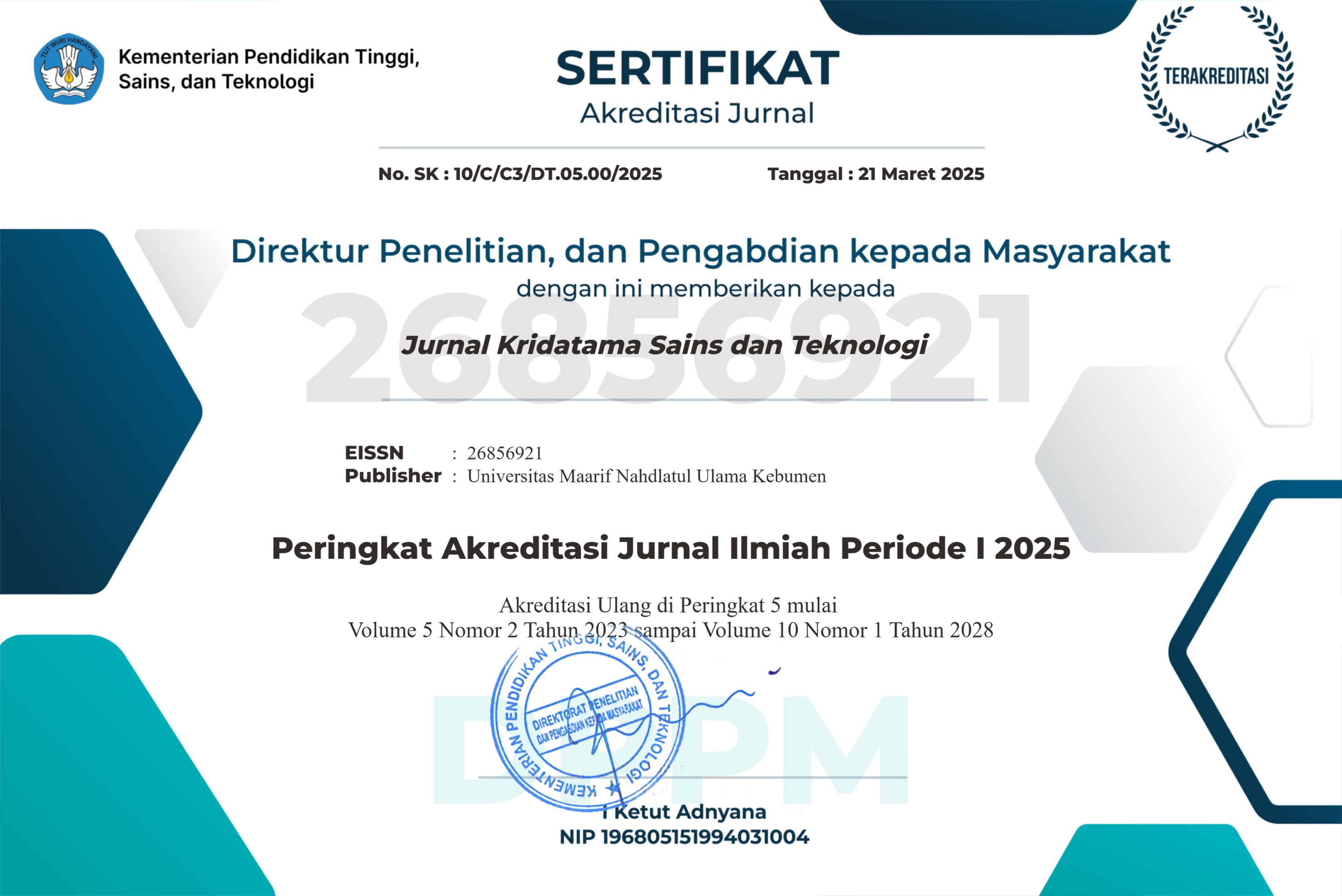Pengaruh Lama Penyimpanan Terhadap Viabilitas dan Vigor Benih Kedelai (Glycine max L.) pada Suhu Kamar
DOI:
https://doi.org/10.53863/kst.v7i02.1836Keywords:
soybean seed, storage, room temperature, viability, vigorAbstract
Soybean (Glycine max (L.) Merrill) is a strategic crop requiring high-quality seeds to improve domestic production. However, soybean seeds have a limited storage life, especially at ambient temperature, which can reduce their physiological quality. This study aimed to identify the decline in seed quality during storage at room temperature. The experiment was conducted at the Agroecotechnology Laboratory, Universitas Andalas, using a Completely Randomized Design with two seed storage durations (3 and 6 months), each with four replications. Observed parameters included maximum germination potential, germination rate, vigor index, and germination uniformity. Results showed that seeds stored for 3 months maintained significantly higher physiological quality than those stored for 6 months. Maximum germination potential decreased from 85% to 25%, germination rate from 90% to 47%, vigor index from 47 to 6, and uniformity from 43% to 5%. It is concluded that soybean seed storage at ambient temperature should not exceed three months to preserve physiological quality. These findings provide important technical guidance for soybean seed management
References
Aldi Perdana, M., al, et, Retno Moeljani, I., & Pongki Soedjarwo, D. (2023). Pengaruh Masa Simpan dan Suhu Simpan Terhadap Viabilitas dan Vigor Benih Coating Kedelai Effect of Storage Periods and Storage Temperatures on Viability and Vigor of Seed Coating of Soybean. 20(1).
Ali, M. R., Rahman, M. M., Wadud, M. A., Fahim, A. H. F., & Nahar, M. S. (2018). Effect of Seed Moisture Content and Storage Container on Seed Viability and Vigour of Soybean. In Bangladesh Agron. J (Vol. 2017, Issue 1).
Bewley, J. D., Bradford, K., & Hilhorst, H. (2013). Seeds: Physiology of Development, Germination and Dormancy. Springer.
Copeland, L. O., & McDonald, M. B. (2001). Principles of Seed Science and Technology (4th ed.). Kluwer Academic Publishers.
Delouche, J. C. (2021). Physiological Changes During Storage That Affect Soybean Seed Quality (Vol. 123). https://scholarsjunction.msstate.edu/seedtechpapers/123
Ebone, L. A., Caverzan, A., Tagliari, A., Chiomento, J. L. T., Silveira, D. C., & Chavarria, G. (2020). Soybean seed vigor: Uniformity and growth as key factors to improve yield. Agronomy, 10(4). https://doi.org/10.3390/agronomy10040545
Endrawati, T., & Ardi, A. K. (2022). Uji Lama Simpan benih Kedelai Varietas Dering dan Argomulyo terhadap Mutu Fisiologi Benih. Journal Viabel Pertanian, 16(2), 130–139. http://ejournal.unisbablitar.ac.id/index.php/viabel
Ramdan, E. P., Kanny, P. I., Pribadi, E. M., & Budiman, B. (2022). Peranan Suhu dan Kelembaban Selama Penyimpanan Benih Kedelai Terhadap Daya Kecambah dan Infeksi Patogen Tular Benih. Jurnal Agrotek Tropika, 10(3), 389. https://doi.org/10.23960/jat.v10i3.5136
Sopian, K. A., Nurmauli, N., Ginting, Y. C., Agroteknologi, J., & Pertanian, F. (2021). Effect Of Variety and Moisture on Seed Viability of Soybean (Glycine max [L.] Merrill) Post Storage Seventeen Months.
Sudirman Numba, Netty Syam, Jabal Rahmat Ashar, & Fatmawati. (2024). Viabilitas dan Vigor Benih Kedelai (Glycine max L.) pada Media Matriconditioning Berbahan Organik dan Anorganik. Jurnal Galung Tropika, 13(1), 45–58. https://doi.org/10.31850/jgt.v13i1.1225
Sutopo, L. (2016). Fisiologi benih: Teori dan aplikasinya dalam teknologi benih. Bumi Aksara.
Wahyuni, S., & Heryani, Y. (2018). Teknologi penyimpanan benih. Malang.
Xing, W., Li, Y., Zhou, L., Hong, H., Liu, Y., Luo, S., Zou, J., Zhao, Y., Yang, Y., Xu, Z., & Tan, B. (2025). Deciphering Seed Deterioration: Molecular Insights and Priming Strategies for Revitalizing Aged Seeds. In Plants (Vol. 14, Issue 11). Multidisciplinary Digital Publishing Institute (MDPI). https://doi.org/10.3390/plants14111730
Downloads
Published
How to Cite
Issue
Section
License
Copyright (c) 2025 Desfal Triati

This work is licensed under a Creative Commons Attribution-ShareAlike 4.0 International License.
Authors retain copyright and grant the journal right of first publication with the work simultaneously licensed under a Creative Commons Attribution-ShareAlike 4.0 International License that allows others to share the work with an acknowledgment of the work’s authorship and initial publication in this journal

















